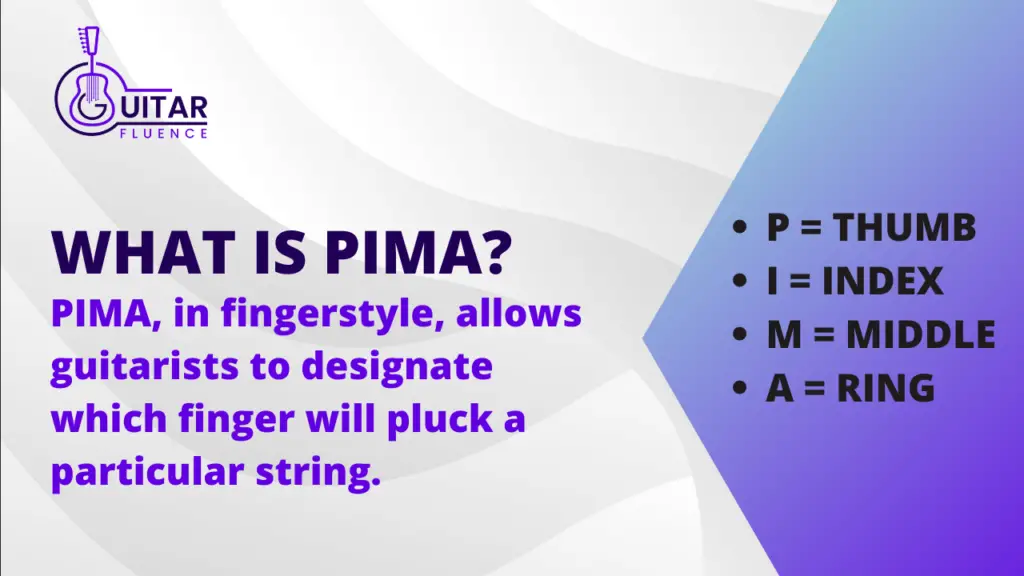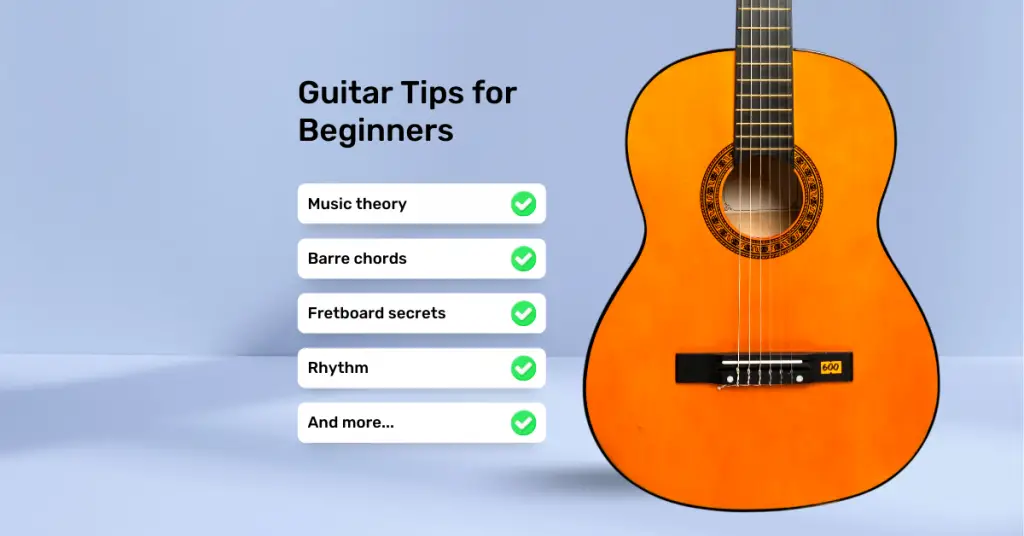Learn what PIMA means on guitar, and how it can improve your fingerstyle playing. Master the art of PIMA for a richer and more dynamic sound.
What is PIMA?
If you’re getting started with fingerstyle guitar, whether it’s acoustic or classical guitar, you’ll likely encounter PIMA.
PIMA allows guitarists to efficiently designate which finger should pluck a particular string while playing.
P is primarily responsible for playing bass notes on the lower strings, while I, M, and A are used for the rest of the strings.
By assigning individual letters to each finger, guitarists gain a logical method for notating different combinations of right-hand fingering techniques.
This means you’ll know what the symbols P, I, M, and A mean when you see them in notation or tablature, making your fingerstyle technique better and easier to apply.
PIMA Guitar Fingers in Classical Guitar

PIMA refers to a classical guitar technique known as the “right-hand finger naming convention,” which utilizes the four main fingers of the picking hand: P, I, M, and A. This comes from the Spanish names for your fingers.
Each letter represents a specific finger: P stands for pulgar (thumb), I represents índice (index finger), M is medio (middle finger), and A stands for anular (ring finger).
- P = pulgar (thumb)
- I = índice (index finger)
- M = medio (middle finger)
- A = anular (ring finger)
The right-hand symbol for the pinky
The pinky is not typically used for fingerstyle technique. If it is used, it will be represented by the letter “C” or “E“.
C = Chiquito (Pinky) in Spanish.
The pinky finger is generally used for the “B” or “high e” strings, and is mostly found in non-traditional, complex fingerstyle compositions.
There are other alternative names for the pinky as well, such as Mignolo, which is the formal name for the “pinky” or “little finger” in Italian.
Applying PIMA
I put together these easy PIMA Guitar Exercises for you, so make sure to check them out and download the free PDF.
Here’s another simple PIMA exercise. It’s great for beginners, and you’ll learn a fun chord progression while you’re at it!
From there, learn some basic songs using fingerstyle. Some popular songs include:
- Dust in The Wind by Kansas
- Stairway to Heaven by Led Zeppelin
- Good Riddance by Green Day
PIMA Guitar Conclusion
PIMA is one of the best ways to structure and learn fingerstyle on the guitar, so I’m glad you decided to learn its meaning and application, today!
Ultimately, mastering this technique will offer you exceptional control over your sound, picking accuracy, and overall acoustic and classical playing.



